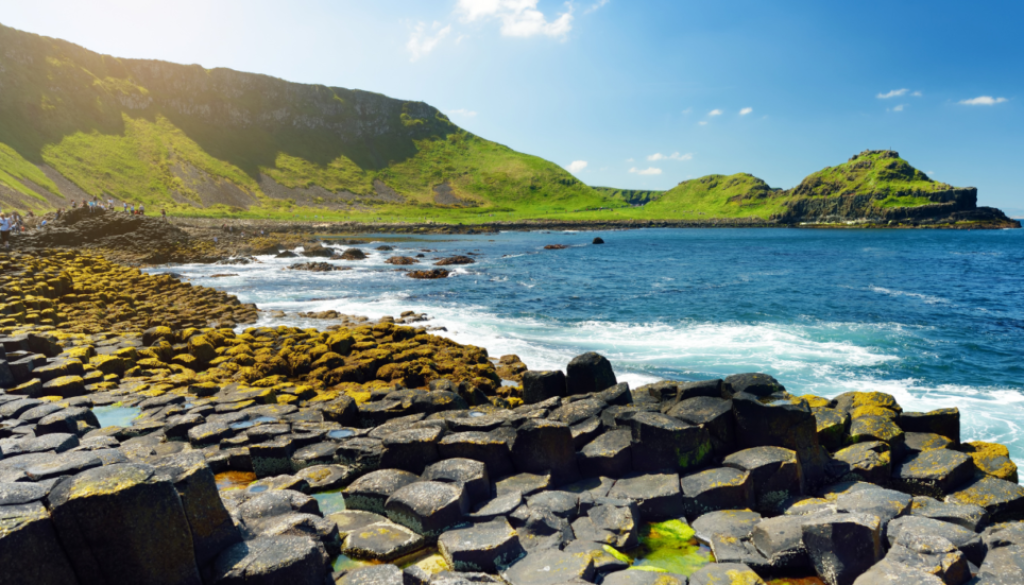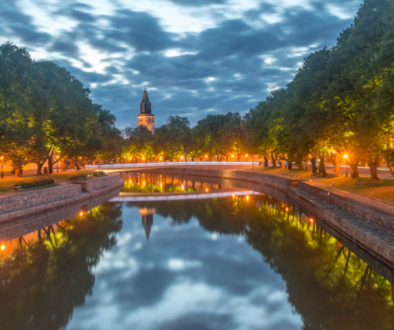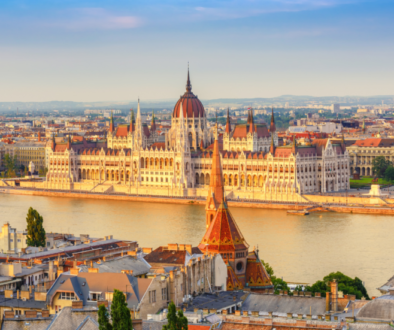Ireland’s Enchanted Edens: 5 Natural Wonders You Must Visit
For centuries, Ireland’s natural landscapes have captivated poets, artists, and travelers alike with their rugged beauty and serene power. It’s not just the lore of the leprechauns and the rolling hills that bring people hither, but the true-life enchantment of the Emerald Isle’s natural wonders. From the ancient geological formations to the untamed wilds, Ireland’s natural splendor offers an escape from the banality of modern life and a bridge to the past. Here, we’ll take a deep-dive into five of Ireland’s most breathtaking natural wonders, each a timeless testament to the Earth’s enduring beauty. Whether you’re a local enthusiast or a globe-trotting nature connoisseur, these are must-see sites that will surely leave you in awe.
The Allure of Ireland and Its Natural Wonders
Ireland’s charm is uniquely interwoven with the tapestry of its natural environment. This small island is a patchwork of lush, green landscapes, craggy coastlines, and mysterious peat bogs. Its scenic beauty has an irresistible pull that extends beyond the country’s quaint villages and bustling pubs. The allure of Ireland’s natural wonders lies in their ability to stir the soul and ignite the imagination. For a nature lover, Ireland offers an embarrassment of riches, and each visit unveils a new facet of its beguiling magic.
The Diverse Landscape of the Emerald Isle
Ireland’s varied topography is a product of its tumultuous geological past. Glaciations, volcanic eruptions, and the relentless force of the Atlantic Ocean have all contributed to the creation of its diverse landscape. From the soaring sea cliffs of the west coast to the verdant valleys sheltering ancient woodlands, Ireland’s geological tapestry mirrors the rich cultural mosaic of its people. This section provides a succinct overview of how Ireland’s geology has shaped its natural attractions. Understanding this context enriches the experience of visiting these sites, as it illuminates the deep connections between land and legend.
The Top 5 Natural Wonders of Ireland to Experience
The Cliffs of Moher
Ireland’s most visited natural attraction, the Cliffs of Moher, are a vertiginous sight to behold. Stretching over 8 kilometers along the Atlantic coast of County Clare, these sheer rock faces rise to heights of 214 meters, offering an uninterrupted view of the ocean that stretches to the Aran Islands and beyond. Not only a geographic marvel, the Cliffs of Moher are a haven for seabirds, with species such as puffins and razorbills nesting along the rugged columns and cliffs. The wild majesty of this site is truly humbling, especially when the setting sun casts a golden glow over the scene.
The Giant’s Causeway
Stepping onto the hexagonal basalt pillars of the Giant’s Causeway feels like entering a realm suspended between myth and reality. Legend has it that this coastal anomaly is the rocky remnant of a causeway built by the giant Fionn mac Cumhaill, a testament to Northern Ireland’s strong Gaelic heritage. The interlocking columns, formed by ancient volcanic activity, lead from the cliffs into the churning sea, creating a pathway that seems to fade into the mists of ancient legend and lore.
The Burren
Meaning “Great Rock” in Irish, The Burren is an otherworldly expanse of karst limestone covering about 250 square kilometers. Its barren appearance belies the rich diversity of flora within its crevices and caves. Come spring, The Burren is a floral wonderland, blooming with rare wildflowers that find purchase in its unique ecosystem. Meander through this rocky labyrinth and you’ll discover prehistoric dolmens, Neolithic tombs, and the well-preserved remains of an ancient Celtic village, a testament to the human connection with the land that spans millennia.
Skellig Michael
This UNESCO World Heritage site, located in the Atlantic Ocean just off the coast of County Kerry, was once home to a Gaelic Christian monastery. Skellig Michael consists of two rocky islets, the larger of which features a well-preserved early Christian complex of stone beehive huts, oratories, and a daunting set of stairways carved into the cliff face. The isolation and precipitous environment make the monastic settlement an awe-inspiring testament to the dedication and resourcefulness of its medieval inhabitants. For the modern-day visitor, the site offers not only historical intrigue but an unparalleled view of the vast Atlantic horizon.
Glenveagh National Park
In the remote highlands of County Donegal, Glenveagh National Park is a sanctuary for nature amidst an expanse of rugged wilderness. The park’s centerpiece is the bewitching Glenveagh Castle, with its beautiful gardens that look out onto the mountains and the tranquil Lough Veagh. It’s an idyllic spot, especially at the twilight hour, when the tinkle of the castle’s garden bell is the only sound that breaks the stillness. Exploring the park’s 16,000 hectares, you may encounter red deer, golden eagles, or simply the reflective serenity of an isolated mirror lake.
The Unveiling of Ireland’s Natural Wonders
Each section will now see an intimate portrayal of each natural wonder, interwoven with answers to thematic questions tailored to peak reader interest and engagement.
The Cliffs of Moher: Where Earth Meets Sea
Q: How were the Cliffs of Moher formed?
A: The Cliffs’ geological story began over 300 million years ago when Ireland was located close to the equator. The depositing of sediment and the rise and fall of sea levels laid down the rock layers that would become the Cliffs of Moher. They took their present form around two million years ago, at the onset of the last Ice Age.
Q: What is the best way to experience the Cliffs?
A: A visitor’s best approach is to take the official Cliffs of Moher Coastal Walk, a 20-kilometer route that begins at Liscannor and ends in Doolin. This way, you can appreciate the cliffs’ vastness and beauty from different vantage points, enjoying the multitude of birdlife and the changing moods of the Atlantic.
Q: What safety precautions should be observed?
A: The Cliffs are unfenced in many areas, and the winds can be strong. For safety, it’s important to stay back from the edge, especially in wet or windy conditions. Wear appropriate hiking shoes, as the paths can be muddy and slippery.
The Giant’s Causeway: A Stairway to a Bygone Ireland
Q: How did the Giant’s Causeway come to be?
A: The Causeway is the result of an ancient volcanic fissure eruption, during which powerful forces of cooling magma led to the formation of the basalt columns, each with its own polygonal shape. Though it seems an imaginative feat of giants, it is one of nature’s grand designs at work.
Q: What are some myths surrounding the Giant’s Causeway?
A: The most famous legend involves the Irish warrior Fionn mac Cumhaill and the Scottish giant Benandonner. In a show of strength that transcends the two nations, Fionn built the Causeway so the giants could meet and do battle. Today, the remnants of this mystical bridge continue to unite legend with the land.
Q: How can one avoid crowds at the Giant’s Causeway?
A: Visiting in the early morning or late afternoon can significantly reduce the number of fellow visitors. Seeing the sun rise or set amid these iconic formations offers a truly magical experience.
The Burren: A Floral Kaleidoscope in a Land of Stone
Q: Why is The Burren referred to as a ‘cold desert’?
A: The Burren’s limestone pavements are marked by cracks known as ‘grikes’ and flat slabs called ‘clints’. These karst formations give the landscape its lunar-like appearance and contribute to its ability to support an array of flora not typically found in similarly temperate climates.
Q: What are the most significant flora discoveries in The Burren?
A: Over 75% of Ireland’s native flora can be found within The Burren, including some of Europe’s rarest and most unique plants. Notable species such as the spring gentian and the mountain avens bloom across the bleak slate, giving the impression of an artist’s palette dropped onto a shelf of stone.
Q: How has The Burren inspired cultural history?
A: The Burren is a vault of ancient and early modern history. It’s been a site of pilgrimage for millennia, with evidence of human habitation dating back to the Stone Age. The unique cultural interplay between early Celtic, early Christian, and prehistoric societies is deeply intertwined with this anomalous landscape.
Skellig Michael: A Stone Crown in the Ocean Mist
Q: What is the monastic history of Skellig Michael?
A: The monastic settlement on Skellig Michael dates back to the 6th century and continued to be inhabited by ascetic monks well into the 12th century. The island provided a remote and ascetic backdrop for these devout Christians, though the exact reasons behind their choice of location remain the subject of historical debate.
Q: How do you visit Skellig Michael?
A: Due to the site’s remoteness and the unpredictability of the weather, getting to Skellig Michael requires booking a boat tour well in advance. The sea crossing can be quite challenging, but the reward of stepping foot on an otherworldly outpost is beyond compare.
Q: What safety measures should one be aware of?
A: The climb up the almost vertical stairs to the monastic complex is strenuous and not suited to those with mobility impairments. Given the relative isolation and unpredictable weather, visitors should dress in layers suitable for the maritime climate and be prepared for the climb’s demands.
Glenveagh National Park: The Isle of Tranquility
Q: What is Glenveagh Castle’s historical significance?
A: Glenveagh Castle was built in 1870 by Captain John George Adair, an English businessman who sought to carve out a home and an estate amid the stark beauty of the Donegal wilderness. The castle holds historical significance as part of the contentious land clearances that associated the area with the tragedy of economic displacement in 19th-century Ireland.
Q: How can one experience the richness of Glenveagh National Park?
A: The best way to immerse yourself in the park is by taking one of the many walking trails. The views of Lough Veagh, the Derryveagh Mountains, and the fabled poison glen offer solace and panoramic beauty. There are trails for every level of hiker, whether strolling through the gardens or climbing to the Castle View.
Q: What about the biodiversity of Glenveagh?
A: The park is home to a wide range of flora and fauna. Red deer, Ireland’s largest wild mammal, can be seen in the park, and it is also a sanctuary for the golden eagle. The park’s meticulously kept gardens are a testament to the powerful allure that nature has even on the most ardent of gardeners.
How to Journey to These Enchanted Natural Wonders
Exploration transcends map coordinates, yet practicality is the traveler’s compass. This section will elucidate the best routes, times, and even internal guidelines for visiting each natural wonder.
The Cliffs of Moher: A Coastal Pilgrimage
Q: What is the easiest way to travel to the Cliffs of Moher?
A: Most visitors opt to travel to the Cliffs from the neighboring towns of Doolin or Liscannor, just a stone’s throw away. These seaside villages offer services like boat tours and visitor centers to help enhance the trip.
Q: When is the best time to visit the Cliffs of Moher?
A: While open year-round, the Cliffs are best experienced in the relative stillness of spring and autumn, when the wind is less biting, and nature is awakening or receding. These transitional seasons add rich colors to the rugged terrain.
Q: Are there any local customs or protocols to be aware of?
A: Visitors are often enchanted by the Cliffs’ vistas and can be tempted to stray off the path for the perfect photo. Local etiquette and safety, however, suggest keeping to the marked trails and following the guidance of local hosts and rangers.
The Giant’s Causeway: A Coastal Icon
Q: What is the closest town to the Giant’s Causeway?
A: The town of Bushmills, known for its eponymous whiskey distillery, serves as a gateway to the Causeway. A brisk walk or a short shuttle ride and you’ll find yourself at this natural marvel.
Q: How can you experience the Causeway’s full grandeur?
A: Visiting during off-peak hours or even during the shoulder seasons can offer a more intimate experience. The UNESCO site also offers an audio guide service, which can enrich your visit with local tales and geological insights.
Q: Is there a way to see the Giant’s Causeway from a different perspective?
A: Taking a boat tour from nearby Portrush or Ballycastle can provide a unique angle, gazing upon the shoreline from the sea and seeing the columns as they fade into the coastal mist.
The Burren: A Geological and Botanical Mecca
Q: What is the recommended mode of transportation for traversing The Burren?
A: While the area is drivable, the best way to appreciate The Burren’s intricacies is by foot. Hiking tours are often available, providing context and knowledge that self-guided trekkers might overlook.
Q: When is the best time to witness The Burren’s floral spectacle?
A: Late spring to early summer is the peak time for the Burren’s unique bloom, when rare orchids and wildflowers paint the otherwise stark tableau with a kaleidoscope of colors. This fleeting period is also when the area is at its most enchanting.
Q: How can one best appreciate The Burren’s rich history?
A: Local guides and ranger tours help travelers unlock the region’s historical and archaeological treasures. These experts can illuminate the enigmatic stone structures and the tales they keep.
Skellig Michael: An Island That Defies the Sea
Q: What is the best way to prepare for a visit to Skellig Michael?
A: Given the unpredictable nature of the sea, being prepared for a delay in your visit is wise. It’s also recommended to bring motion sickness medication, as the waters around Skellig Michael can be rough.
Q: How can one maximize their time on Skellig Michael?
A: Take a guided tour to ensure you see every important feature of the island. Local tour operators are knowledgeable about the site’s history and ecology, providing a holistic perspective for the visitor.
Q: What should visitors avoid to best preserve the island?
A: There are strict guidelines for the preservation of the island’s historical sites and natural splendor. Adhering to instructions from your guides and not disturbing any flora or fauna is essential.
Glenveagh National Park: A Highland Sanctuary
Q: Which is the nearest town for visiting Glenveagh National Park?
A: The town of Letterkenny, located just 24 kilometers away, is the go-to for travelers headed to Glenveagh. Tour buses and taxis can be found here, facilitating the final stretch of the journey.
Q: How can one plan a relaxed exploration of the park?
A: Staying overnight at the park’s accommodation affords visitors the luxury of multiple days to fully explore. The loughs, continuous paths, and the characteristic silence of the mountainside ensure that no detail is overlooked.
Q: Are there any insider tips for visiting Glenveagh National Park?
A: Bringing a picnic to savor amidst nature or partaking in a traditional boat tour on Lough Veagh can offer rare, unforgettable moments that are part and parcel of the tranquil Glenveagh experience.
A Sustainable Stroll Through Ireland’s Natural Jewels
Sustainable tourism is not just a buzzword—it’s an ethos that protects the very environments that sustain travelers. Here, the focus will be on best practices, ecotourism, and the role of visitors in conserving these natural wonders.
The Cliffs of Moher: Preserving Vertigo at the Vantage Point
Q: How can visitors to the Cliffs minimize their impact on the environment?
A: Utilizing the local recycling facilities, avoiding single-use plastics, and staying on designated pathways are all small, impactful measures that visitors can take to preserve this site.
Q: What role does the local community play in preserving the Cliffs?
A: The Cliffs are not just a geological marvel but a lifeline for the local economy. The community plays a central role in maintaining the site, and economic support through tourism helps fund preservation efforts.
The Giant’s Causeway: A Legacy of Stone That Endures
Q: Are there any green travel options for reaching the Causeway?
A: Electric taxis, bicycles, or walking are sustainable modes of reaching the Causeway, offering a scenic route while keeping carbon footprints in check.
Q: How does conservation play a part in the Giant’s Causeway’s future?
A: The National Trust, which oversees the Giant’s Causeway, continuously monitors visitor numbers and behaviors to ensure the site’s ecological integrity. Ongoing research and conservation initiatives further safeguard this natural wonder for future generations.
The Burren: Nurturing Flowers on the Rock of Ages
Q: What local initiatives are in place for Burren conservation?
A: The Burren Life Project, supported by the EU, aims to conserve the region’s biodiversity and shed light on the coexistence of farming and nature. Their work encourages ecological harmony and sustainable agriculture practices.
Q: How does tourism positively impact Burren conservation?
A: Revenue from eco-tourism can be channeled into efforts to conserve The Burren’s unique environment. By contributing to carefully managed visitor plans, tourists can actively participate in the preservation of this ecological marvel.
Skellig Michael: A Monastic Presence in a Modern Context
Q: What lessons can be learned from the Skellig Michael conservation model?
A: Skellig Michael exemplifies the delicate balance between preserving visitor accessibility and protecting a fragile ecosystem. Strict regulations and limited access periods serve as a sustainable model for similar sites.
Q: How can travelers suppport the conservation of Skellig Michael?
A: By booking through a responsible tour operator, travelers contribute to the sustainable preservation of Skellig Michael. These operators prioritize environmental stewardship and support initiatives that maintain the island’s pristine state.
Glenveagh National Park: A Window into Wilderness’ Well-Being
Q: What programs are in place to conserve Glenveagh National Park?
A: The park’s management works with conservation volunteers and local schools to maintain its landscapes and wildlife. These efforts aim to educate future generations and ensure the park’s wellbeing.
Q: How do visitors to Glenveagh play a part in its preservation?
A: By following park guidelines, visitors help to keep Glenveagh pristine. Avoiding disturbance of wildlife, not straying off paths, and fostering a respect for the park’s



